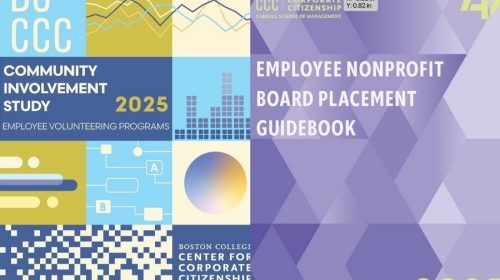WEBINAR: This webinar explores how to measure and communicate your organization's social impact with proven frameworks and strategies that matter to stakeholders.
SEC Final Rule on Corporate Climate Disclosure: An Overview of New Reporting Requirements

In March 2024, the U.S. Securities and Exchange Commission (SEC) approved a final rule on corporate climate disclosure that companies have been anticipating for several years. Below is a breakdown of what’s involved, who it affects, and how this new requirement fits into the ever-evolving context of ESG reporting regulations in the U.S. and abroad.
What does the new SEC rule require?
The final rule will require thousands of U.S. public companies to include climate risk data in their annual reports and/or financial statements. By mandating more consistent, comparable, and reliable data, the rule aims to help investors make better-informed decisions. Under the rule, public companies will now have to report on the following:
- The climate risks that have had (or are likely to have) an impact on business strategy, results of operations, or financial outlook (e.g., costs involved in moving away from fossil fuels)
- Strategy-related activities a company has used to mitigate or adapt to a material climate related risk
- Costs and losses incurred as a result of climate change or severe weather events (e.g., hurricanes, wildfires, flooding, drought, extreme temperature, and sea level rise)
- Oversight by the company’s board of directors regarding climate-related risks, as well as management’s role in assessing and managing the company’s material climate-related risks
- Climate-related targets or goals that have (or are likely to have) an impact on business, results of operations, or financial condition. Costs and losses incurred as a result of carbon offsets and renewable energy credits or certificates (RECs)

What's the scoop on Scopes?
Disclosure of Scope 1 and Scope 2 emissions will be mandatory only for certain entities. Under the final rule, large accelerated filers and accelerated filers will be required to report material Scope 1 and/or Scope 2 emissions.
- Scope 1 Emissions (Company Controlled)–Emissions from corporate offices, manufacturing plants, fleets, etc.
- Scope 2 Emissions (Indirectly Caused)—Power plant emissions for purchased energy

What does the final SEC rule omit?
A complete document on The Enhancement and Standardization of Climate-Related Disclosures for Investors summarizes all the comments, reasoning, and amendments between the SEC’s proposed draft and final rules. The most striking omissions and alterations include. Scope 3 emissions. Scope 3 was originally included in the initial proposal but has been dropped from the final rule. This means companies will not be required to gather and report data on GHG emissions from their suppliers and product end-users.
The final rule also leaves it to companies’ discretion to determine whether Scope 1 (direct) and Scope 2 (indirect) emissions data is material—(that is, whether the data is necessary for investors to make informed decisions. If Scope 1 and 2 data is not deemed material, it will not need to be reported. Small and emerging growth companies are exempt from this requirement altogether. It should be noted that many of the companies covered by the SEC rule will also be subject to the EU’s ESRS requirements and Scope 3 is required by this rule and may become by default an expectation and common practice.
What determines if Scope 1 or Scope 2 climate data is “material” or not?
Companies will have to conduct materiality assessments to determine for themselves. The determination comes down to whether a reasonable investor would consider the disclosure important when making an investment or voting decision, or whether they would view an omission of the disclosure as having significantly altered the total mix of information available. Getting it wrong may mean reissuing a financial statement.
Why did the final rule change from what was initially proposed?
The final rule is the result of a two-year process and more than 24,000 comment letters—from companies, auditors, legislators, etc.—many arguing the costs involved in more extensive (Scope 3) reporting, as well as questions over the consistency or reliability of such data points. Even despite the slackening, the rule is likely to be challenged in courts. Ten states along with various trade groups and environmental organizations have already filed petitions or threated lawsuits. Criticism is coming from anti-ESG factions that the rule goes too far, and from activist organizations that it has not gone far enough.
How does the SEC rule compare with other ESG reporting regulations, including the EU’s CSRD and California’s SB253 and SB261?
Compared to both of the above, the SEC final rule is less stringent.
Companies operating globally—generating more than €150 million in the EU— are already preparing to comply with Europe’s Corporate Sustainability Reporting Directive (CSRD), which requires Scope 3 disclosures. These firms will not have any additional requirements to address.
California’s climate disclosure laws, passed in October 2023—which affect both private and public companies—are also more demanding. They require firms operating in the state with more than $1 billion in revenue to report direct and indirect emissions, including Scope 3.
Which companies will be affected by the new SEC rule?
The final rule will affect publicly traded companies in the U.S., but only larger firms will have to address the Scope 1 and Scope 2 emissions requirements—and even then, only if material.
According to SEC estimates, roughly 2,800 U.S. companies will have to make the disclosures and about 540 foreign companies with business in the U.S. will have to report information related to their emissions. This is many fewer U.S. companies than are expected to be subject to the EU’s ESRS requirement.
When does the new SEC rule take affect?
The final rules will become effective 60 days after publication and phased in depending on a company’s filing status—accelerated filer, large accelerated filer, non-accelerated filer, smaller reporting company, etc.—with compliance dates ranging from FYB 2025 to FYB 2033.
| Compliance Dates Under Final Rules* | ||||||
| Registrant (Company) Type | Disclosure & Financial Statement Effects Audit | GHG Emissions/Assurance | Electronic Tagging | |||
| All Reg. S-K and S-X disclosures, other than as noted in this table | Item 1502(d)(2), Item 1502(e)(2), and Item 1504(c)(2) | Item 1505 (Scopes 1 and 2 GHG emissions) | Item 1506 – Limited Assurance | Item 1506 Reasonable Assurance | Item 1508 Inline XBRK tagging for subpart 1500** | |
| Large accelerated filers | FYB 2025 | FYB 2026 | FYB 2026 | FYB 2029 | FYB 2033 | FYB 2026 |
| Accelerated filers (other than smaller reporting companies and emerging growth companies) | FYB 2026 | FYB 2027 | FYB 2028 | FYB 2031 | N/A | FYB 2026 |
| Smaller reporting companies, emerging growth companies, and non-accelerated filers | FYB 2027 | FYB 2028 | N/A | N/A | N/A | FYB 2027 |
*As used in this chart, “FYB” refers to any fiscal year beginning in the calendar year listed. **Financial statement disclosure under Article 14 will be required to be tagged in accordance with existing rules pertaining to the tagging of financial statements. See Rule 405(b)(1)(i) of Regulation S-T. |
||||||
U.S. Securities and Exchange Commission. Fact Sheet: The Enhancement and Standardization of Climate-Related Disclosures: Final Rules.
How should companies prepare for the SEC’s new climate disclosure rules?
Many companies already issue reports on sustainability and ESG metrics, which is a useful starting point. But as climate risk reporting moves from voluntary to required, stakeholders will have a much clearer view of how companies compare with others in their sector. Forward-thinking companies will want to:
- Bring more teams into the climate conversation, so that strategies and opportunities can be explored to the fullest
- Ensure all company leaders are fluent in The Fundamentals of Sustainability Reporting
- Develop a transition plan—even though not required by the SEC—to remain competitive where others are forging ahead
Looking to upskill a team of people on sustainability or ESG reporting?
Ask us about our team training options (virtual or on-site) to broaden your capabilities in climate strategy.
Related Content
RESEARCH BRIEF - Researchers investigated how ESG activities help or hurt financial performance, using nine years of data from over 1,200 global companies.
RESEARCH BRIEF - Researchers analyzed 4 US energy exchange-traded funds (ETFs) over 15 years, including 2 dirty energy funds tracking fossil fuel companies and 2 clean energy funds tracking renewable energy companies.
RESEARCH BRIEF - Researchers conducted a survey, which measured perceptions of CSR and ethical leadership within the manufacturing and service industries.
WEBINAR: This webinar explores how corporate giving will be reshaped by the One Big Beautiful Bill. Hear directly from corporate citizenship leaders as they share innovative, real-world strategies that deliver impact for communities and results for business.
This study explores shifting trends in employee volunteering, corporate giving, and other means of corporate community involvement.
This guidebook offers insights on placing employees in nonprofit board service roles.
This study explores shifting trends in employee volunteering, corporate giving, and other means of corporate community involvement.









